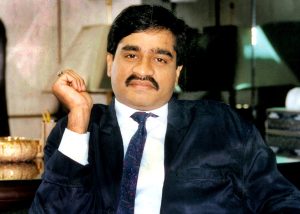On June 1, 2001, a drunk Crown Prince Dipendra Bir Bikram Shah allegedly killed 11 members of the Nepali Royal Family, including his father, King Birendra, before turning the gun on himself. The massacre reportedly followed an argument between Dipendra and his parents, who objected to his plans to marry local aristocrat Devyani Rana. Some observers also believed that the king’s apparent willingness to consider a Maoist proposal to make the Nepali monarchy as ceremonial one in order to end the insurgency infuriated his son, resulting in the mass murder.
Several other theories circulated in the months after the Palace massacre. Within days of the killings, underground Maoist leader Baburam Bhattarai wrote that the incident was the outcome of a political conspiracy. The needle of suspicion also pointed in the direction of the king’s brother, Gyanendra Bir Bikram Shah Dev, who was absent from the palace on the night of the killings and assumed the throne after the bloodshed. He has denied involvement in the incident.
A new theory links the massacre to the Pakistani intelligence agency, the Inter-Services Intelligence (ISI). According to the recently released book, “Kathmandu Chronicle: Reclaiming India Nepal Relations,” authored by former Indian Ambassador to Nepal K. V. Rajan and Atul K. Thakur, the ISI had close contacts with members of the royal family, especially Prince Dipendra, through the “D & Co Group” – i.e. the Indian gangster Dawood Ibrahim and his organization. Both Ibrahim and the ISI had a common interest in ensuring that King Birendra, who was discreetly cooperating with the Indian government on controlling the misuse of the open border, did not reach a rapprochement with the Maoists.
Ibrahim was active in Mumbai and fled to Dubai in 1986, from where he relocated to Pakistan after he was found to have been involved in the Mumbai serial blasts of 1993. The gangster has since been working closely with the Pakistani intelligence agency.
According to the book, Ibrahim aimed to “damage the credibility of the monarchy and make it implode from within” due to King Birendra’s role in exposing Pakistan’s terror-related activities in Nepal resulting in the humiliation of Pakistani diplomats. The authors claim Ibrahim had his own motives too, as King Birendra was cooperating with India to curb the extensive cross-border smuggling activity of Ibrahim’s gang.
And Prince Dipendra “fell into the trap by taking personality-changing drugs and alcohol and started behaving strangely every now and then. He was also fed on fabricated theories of the king being ready to compromise with the Maoists and accept a ceremonial position like that of President.”
The outcome was the massacre, as the crown prince was convinced that “there was no future for him in Nepal, in addition to the problems he was already having in convincing his parents about marrying the girl of his choice.” The ISI was successful in instigating the massacre, and it assumed the future of the monarchy was uncertain.
The authors claim that given King Gyanendra (King Birendra’s successor) had a “poor equation” with India, the ISI and Ibrahim’s gang would have assumed that the possibility of India and the Maoists doing a deal with King Gyanendra would be nil. This apart, the ISI assumed that the Maoists would also blame India for “conspiring to kill the royal family.”
However, as the book mentions, the succeeding turn of events went beyond the supposed expectations of the ISI and D & Co. as the Maoists went on to become part of the Nepali power structure several times. Consequently, the country refused to be a fertile ground for terrorism against India as Pakistan had planned.
The role of ISI and D & Co’s involvement in the assassinations remained under wraps and was shielded from the media.
In India, two weeks after the assassination, the Shiv Sena, a political party in Maharashtra state, had alleged that the ISI and Maoist insurgents had hatched the plot to exterminate the royal family. It is not known whether its allegation was based on evidence, but the party made a case for an independent inquiry into the massacre.
The book mentions that few people knew about the lethal plans of ISI and D & Co in Nepal. The authors claim the people involved were “palace loyalists, good at keeping secrets to themselves all the way to the crematorium. Another possible reason for non-leakage: too many skeletons in a few cupboards.”

































